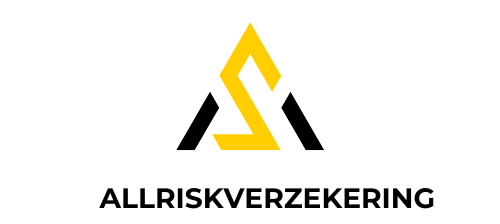Downtime in manufacturing is the arch-nemesis of productivity. Every minute a production line stands idle due to equipment failure, costs multiply. In this age of digital transformation, where data is the new oil, artificial intelligence (AI) may hold the key to predicting and preventing these dreaded stoppages. AI-driven predictive maintenance, powered by machine learning and real-time data, offers a way to optimize manufacturing processes, improve equipment efficiency, and reduce downtime. But how does it work?
Understanding the Potential of Predictive Maintenance
Predictive maintenance is not a new concept. However, the advent of AI and machine learning has taken it to an entirely new level, transforming it into a potent tool for manufacturers to keep their machines running smoothly and avoiding unplanned downtime.
Also to read : Can Smart Fabric Enhance Athlete Performance Monitoring in Competitive Sports?
Predictive maintenance relies on data collected from equipment sensors. These sensors monitor different variables such as temperature, pressure, vibration, and others, akin to the human body’s vital signs. The data generated is substantial, and this is where AI, specifically machine learning algorithms, come into play.
Harnessing Machine Learning for Predictive Maintenance
Machine learning, a subset of AI, involves teaching computers to learn and interpret patterns from data. In the domain of predictive maintenance, machine learning algorithms are trained on sensor data from manufacturing equipment.
Additional reading : What Are the Technological Breakthroughs in Non-Invasive Prenatal Testing?
The algorithms recognize patterns and relationships between different variables, allowing them to predict potential equipment failures before they occur. For instance, an algorithm might identify a correlation between increased vibration and impending motor failure. Once this correlation is known, the system can alert operators to perform maintenance before the motor fails and causes downtime.
Realizing Cost-Savings with AI-driven Predictive Maintenance
In today’s hyper-competitive manufacturing sector, every second of production time counts. With AI-driven predictive maintenance, manufacturers can avoid unexpected equipment failures, thereby minimizing costly downtime.
By identifying potential problems before they cause a failure, maintenance can be scheduled during non-productive times. This not only prevents unexpected stoppages but also allows for more efficient use of maintenance resources. The cost savings from reduced downtime and optimized maintenance can be significant, leading to improved bottom lines for manufacturers.
The Role of Real-time Data in Predictive Maintenance
For predictive maintenance to work effectively, it requires a steady flow of real-time data from equipment sensors. This continuous stream of data allows the system to monitor equipment performance in real-time, identifying any anomalies that might signal a potential failure.
Real-time data is also crucial for the continuous learning of the AI algorithms. The more data the algorithms have to learn from, the better they become at predicting potential failures. This continuous learning process, known as machine learning, is what sets AI-driven predictive maintenance apart from traditional maintenance methods.
Overcoming Challenges in Implementing AI-driven Predictive Maintenance
While the benefits of AI-driven predictive maintenance are clear, implementing it in a manufacturing facility is not without challenges. For starters, it requires sophisticated sensors and data infrastructure. These can be expensive and may require significant upfront investment.
Additionally, effectively using the data generated by these sensors involves a steep learning curve. Manufacturing personnel must learn to interpret the system’s predictions and take appropriate action. This necessitates a cultural shift within the organization towards a data-driven approach.
Despite these challenges, the potential benefits of implementing AI-driven predictive maintenance – in terms of improved equipment efficiency, reduced downtime, and cost savings – make it a compelling proposition for manufacturers.
Integrating Historical Data for Enhanced Anomaly Detection
In the realm of AI-driven predictive maintenance, one cannot overstate the value of historical data. This data, consisting of records of past equipment failures, maintenance activities, and other operational metrics, serves as the foundation for teaching machine learning algorithms. These algorithms are trained to analyze data, recognize patterns, and subsequently predict equipment failures before they occur.
Historical data provides a reference point for the algorithm, enabling it to detect anomalies. For instance, if a machine’s temperature suddenly deviates from historical trends, the algorithm can flag this as a potential issue. These early warnings provide ample time to schedule maintenance activities, thereby averting unplanned downtime.
Moreover, historical data plays a vital role in refining and improving the predictions made by AI algorithms. Over time, as the algorithm processes more data, it ‘learns’ and ‘adapts’, consequently becoming more accurate in its predictions. This process, known as machine learning, is a distinguishing feature of AI-driven predictive maintenance.
However, the effectiveness of predictive maintenance is largely dependent on the quality of the data fed into the system. Poor data quality, characterized by inconsistencies, inaccuracies, or gaps in the data, can negatively impact the machine learning process. Therefore, ensuring data quality is paramount for successful implementation of AI-driven predictive maintenance.
Improving Operational Efficiency with Data-Driven Maintenance Strategies
AI-driven predictive maintenance significantly improves operational efficiency in manufacturing facilities. By leveraging real-time and historical data, it empowers manufacturers to transition from reactive maintenance strategies to proactive, data-driven ones.
With traditional maintenance strategies, equipment is often repaired or replaced only after it has failed, leading to unplanned downtime and high maintenance costs. However, with AI-powered predictive maintenance, potential failures can be detected in advance. This allows maintenance schedules to be planned during non-productive times, thereby minimizing interruptions to production.
Furthermore, predictive maintenance can help optimize the use of maintenance resources. By predicting when and what type of maintenance will be needed, it allows for better planning and allocation of resources. This can lead to significant cost savings, as unnecessary maintenance activities can be avoided.
However, it is important to note that while AI-driven predictive maintenance is a powerful tool, it does not eliminate the need for human intervention. Instead, it provides valuable insights that can aid decision-making. Ultimately, the successful implementation of predictive maintenance requires a combination of advanced AI technology and skilled personnel who can interpret and act on the system’s predictions.
Conclusion
The potential of AI in predicting and preventing unplanned downtime in manufacturing facilities is immense. With its ability to analyze data, detect anomalies, and predict equipment failures, AI-driven predictive maintenance is transforming the way manufacturers approach maintenance.
While the implementation of AI-powered predictive maintenance comes with its own set of challenges, including substantial upfront investment and the need for a cultural shift towards a data-driven approach, the benefits it offers are considerable. These include improved equipment efficiency, reduced downtime, and significant cost savings.
As AI technology continues to evolve, it is anticipated that it will play an increasingly important role in the manufacturing sector. By harnessing the power of AI, manufacturers can not only optimize their maintenance strategies but also gain a competitive edge in the market.
















